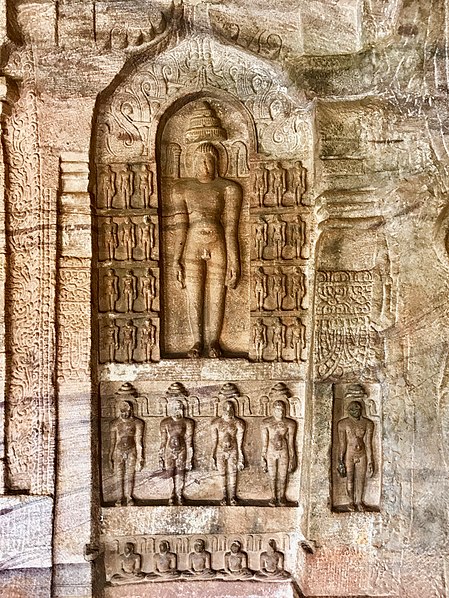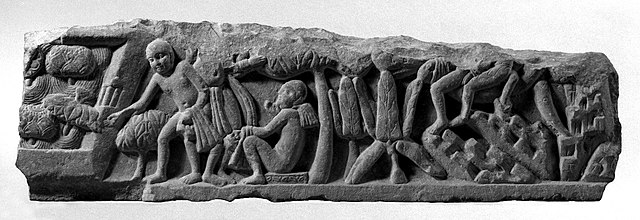Digambara is one of the two major schools of Jainism, the other being Śvetāmbara (white-clad). The Sanskrit word Digambara means "sky-clad", referring to their traditional monastic practice of neither possessing nor wearing any clothes.
Image depicting Acharya Kundakunda
Stela at Marhiaji, Jabalpur, showing the transmission of the oral tradition, erected on the 2500th anniversary of Mahavira's nirvana
Adinatha image (Badami caves)
Kizhavalavu (Keelavalavu) Sculptures
Jain schools and branches
Jainism is an Indian religion which is traditionally believed to be propagated by twenty-four spiritual teachers known as tirthankara. Broadly, Jainism is divided into two major schools of thought, Digambara and Śvetāmbara. These are further divided into different sub-sects and traditions. While there are differences in practices, the core philosophy and main principles of each sect is the same.
Digambar Jain monk
A 1st- to 2nd–century CE water tank relief panel showing two ardhaphalaka Jain monks carrying colapatta cloth on their left hand found in the ruins of Mathura (Brooklyn Museum 87.188.5). This cloth carrying tradition to cover genitalia by ancient Jain monks in principle resembles the beliefs of the Śvetāmbara and now extinct Yapaniya subtradition.
Idol of Devardhi Ksamashramana at vallabhi tirth, the most revered Śvetāmbara monk







